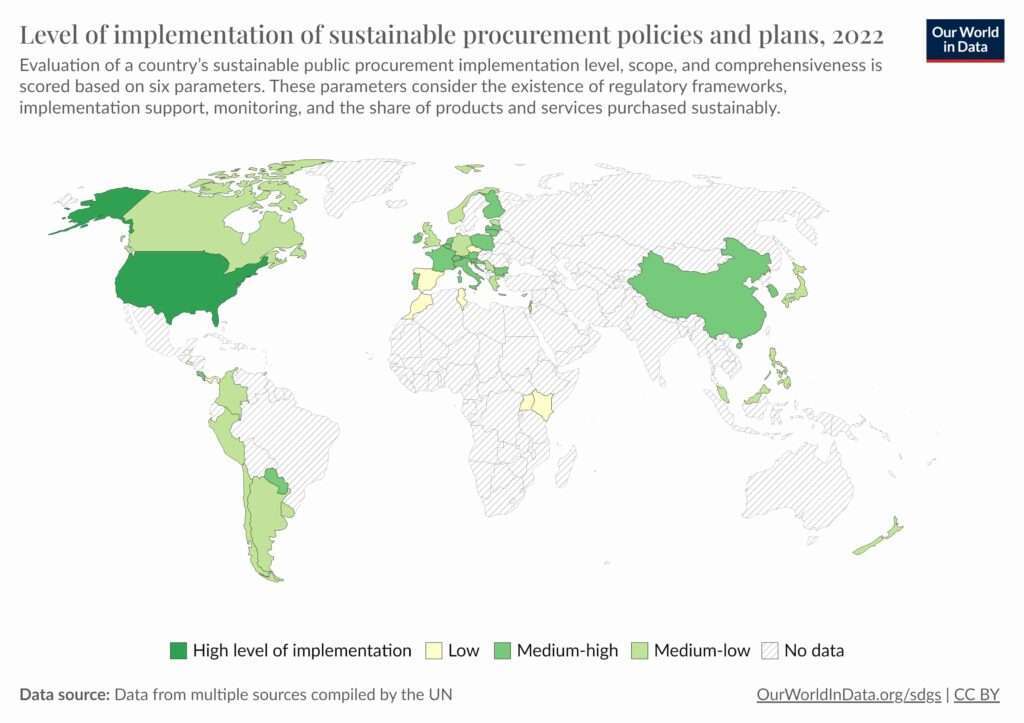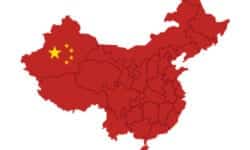For every business to improve sustainability is necessary. What is it exactly? Purchasing how important it is in this respect? Why do organizations need to become socially responsible? Sustainable procurement refers to the approach regarding environmental, social, and governance factors together with the price and quality of materials that an organization acquires. Sustainability is not just a buzzword but has become a mainstream imperative for organizations. Every business should adjust itself towards trends such as renewable energy and climate change resilience.
Again, receiving a social license from consumers is vital for business operations. The Role of Procurement Managers Transitioning their organizations to sustainability is an important role for procurement managers. From addressing issues like Net Zero carbon emissions to handling supply chain impacts such as deforestation and human rights violations, they carry a heavy burden. It is necessary for them to understand these problems, take steps, and drive the change process in their firms.

Integrating Sustainability into Procurement In both the corporate sector and public administration, there is a shared understanding of the relevance of sustainable procurement. Modern business requires consideration for the environment and society in all stages of production. Therefore, another important factor for the corporate social responsibility (CSR) dimension is the inclusion of sustainability principles in procurement policies. This involves blending sustainable organizational behavior and responsible commercial practices into purchasing decisions, processes, and policies.
Core Subjects of Sustainable Procurement For sustainable procurement to happen, organizations need to base their efforts on seven main subjects. These are the organization’s governance; human rights; labor practices and community involvement and development, the environment, fair operating practices, and consumer issues. All these subjects contribute significantly to developing a framework of sustainable procurement that meets stakeholders’ expectations.
Guidelines and Standards As is the case in any other professional field, there are guidelines and standards that corporations must undertake in order to be able to effectively implement their sustainable procurement objectives. ISO 2400, for instance, provides guidance on sustainable procurement. Important treaties and guidelines related to sustainable procurement will be discussed later in this module.
Procurement sustainability strategy
In order for businesses to address environmental, social, and economic impacts on their supply chains, they have to adopt sustainable procurement strategies. By taking a systemic approach starting with assessments and going all the way up to stakeholder partnerships, organizations will improve their sustainability practices as well as drive value-centered procurement efforts.
We will discuss below some of the major strategies for sustainable procurement for 2024 with the help of experts,
- Sustainable vs Responsible Procurement – Sustainable purchasing is about incorporating in the sourcing decision of organizations, and factors such as environmental and social considerations. To be responsible buyers means to take personal responsibility for implementing the principles in a manner that goes beyond the interests of a company. Places where damage may occur include human rights violations, slavery, and environmental practices.
- Sustainable Procurement Approach – Such companies may embark on a nine-step sustainable supply chain management. Company assessment, vision setting, and supplier prioritization are some of the steps. In the advanced stages of mature sustainable procurement areas, there are training, collaboration, and stakeholder partnerships.
- Company Assessment – Doing an appraisal of a company’s inner and outer landscape helps in finding out major supply chain issues, and risks assessment and obtaining inside support. It is essential to have information concerning key products, suppliers, and operations when mapping the overall supply chain.
- Vision and Expectations – An essential requirement for a sustainable supply chain program is having a clear vision and objectives that will help in setting direction and commitment. A supplier code of conduct aligned with sustainability principles helps in communicating suppliers’ expectations more effectively.
- Supplier Prioritization – Engagement is ordered through the conduct of spending analysis and classification of suppliers according to sustainability hazards. It is a valuable resource in establishing crucial areas and vendors for focused initiatives on sustainable sourcing.
- Performance Assessment – One way to engage suppliers in addressing sustainability issues is through self-assessment, audits, and worker surveys as methods. For the purpose of maintaining high-quality supplier performance on sustainability issues, monitoring systems track performance while implementing improvement strategies.
- Issue Remediation – Working with suppliers to address poor performance or non-compliance involves setting realistic actions, timelines, and consequences. Companies can incentivize suppliers for strong performance through recognition, rewards, and financial incentives.
- Procurement Process – To integrate sustainability into procurement practices, it is important to manage sustainability issues across supplier selection, specification, bid evaluation, and contract management stages. Energy efficiency and carbon dioxide reduction can be some of the things that companies can use as guidelines to help them in dealing with suppliers.
- Training and Capability Building – Among the capability-building programs are training supplier personnel, worker hotlines, and resource networks. Formulating individual improvement plans for suppliers and using various training modalities can improve supplier competency for sustainability activities.
- Supplier Collaboration – Collaboration with suppliers on innovation and progress toward achieving sustainability goals can be mutually beneficial. By working together closely, companies can address the root causes of problems, liberate workers, and promote continuous improvement.
- Stakeholder Partnerships – The existence of partnerships between industries and multiple stakeholders facilitates the realization of supply chain sustainability goals. By sharing successful models, establishing common rules, and integrating data management systems, companies can collectively address complex sustainability issues.
- Sustainability Impact KPIs – The sustainability impact of procurement is evaluated by Key Performance Indicators (KPIs), such as adherence to sustainable sourcing, diversity in the supply chain, and sustainability material intensity. Tracking the progress is important and hence, monitoring of supplier’s performance along with setting performance measures is done.
Level of implementation of sustainable procurement policies and plans, 2022

Additional Benefits The advantages of responsible purchasing are numerous, and they include observance of the law, cost savings, reputation management, and effective utilization of resources. This also helps to enhance value creation in the firms apart from the cost savings through procurement aligned towards sustainability objectives.
Sustainable purchasing
Well, we should be thinking of this topic as a fun fact. Let’s try the Mr. Beast script method to better understand though we will professionally focus on sustainable purchasing.
How Mr.Beast would describe this topic?
———- How I Spent $1,000,000 On Sustainable Purchasing,
Hey guys, it’s Mr. Beast, and today I’m going to show you how I spent one million dollars on sustainable purchasing. That’s right, I bought a bunch of eco-friendly products and services, and I’m going to give them away to random people. But first, let me explain what sustainable purchasing is and why it’s important.
Sustainable purchasing is when you buy things that are good for the planet, the people, and the economy. It means choosing products and services that use less energy, water, and materials, that produce less waste and pollution, and that support fair and ethical practices. By doing this, you can help reduce your environmental impact, save money, and make a positive difference in the world.
Sounds awesome, right? Well, that’s why I decided to spend one million dollars on sustainable purchasing, and I’m going to share it with you guys. Let’s go.
First, I went to a local store that sells organic and fair trade products, such as coffee, chocolate, and clothing. I bought everything they had in stock, and I paid them extra for their efforts. Then, I went outside and gave away the products to random strangers, who were very happy and surprised. Some of them even hugged me and thanked me for being so generous and eco-conscious.
Next, I went to a solar panel company and bought 100 solar panels, which can generate clean and renewable energy for homes and businesses. I also bought 100 batteries, which can store the excess energy and provide backup power. Then, I went to a nearby neighborhood and installed the solar panels and batteries on the roofs of 100 houses, for free. The homeowners were amazed and grateful, and they said they would save a lot of money on their electricity bills and reduce their carbon footprint.
After that, I went to a car dealership and bought 10 electric cars, which run on batteries instead of gasoline. I also bought 10 charging stations, which can recharge the batteries using electricity from the grid or renewable sources. Then, I went to a parking lot and gave away the cars and the charging stations to random drivers, who were shocked and excited. Some of them even cried and said they would never have to buy gas again and that they would help fight climate change.
Finally, I went to a charity organization and donated $100,000, which they will use to support sustainable development projects around the world. These projects include building wells and irrigation systems, planting trees and crops, providing education and health care, and empowering women and children. The charity workers were thrilled and honored, and they said they would make a huge impact on the lives of millions of people.
And that’s how I spent one million dollars on sustainable purchasing. I hope you enjoyed this video, and I hope you learned something new. Sustainable purchasing is not only good for the environment, society, and economy but also for yourself and others. So, why not give it a try? You can start by buying less, buying better, and buying locally. And remember, every purchase counts.
If you liked this video, please subscribe to my channel and hit the like button. Also, leave a comment below and tell me what you think of sustainable purchasing and what you would buy if you had one million dollars. And don’t forget to check out my merch, which is made from organic cotton and recycled materials, and which supports environmental and social causes. The link is in the description.
Thank you for watching, and I’ll see you in the next video. Peace out. ———–
Now we should begin to try to understand professionally that sustainable buying is the technique of getting goods and services that do not have undesirable outcomes on the environment, society, as well as economy. It is about how we think about products and services from the time they are created until they become waste or reused.
Some of the benefits of sustainable purchasing are,
- It can reduce greenhouse gas emissions, waste, and pollution by choosing low-carbon, energy-efficient, and recyclable products and services.
- It can save costs and improve efficiency by optimizing the use of resources and reducing unnecessary consumption.
- It can enhance the reputation and brand image of the organization by demonstrating social responsibility and environmental stewardship.
- It can foster innovation and competitiveness by encouraging suppliers to offer more sustainable solutions and creating new market opportunities.

To maintain sustainable purchasing in 2024, some of the strategies that can be adopted are,
- Setting clear and measurable goals and targets for sustainable purchasing, aligned with the organization’s vision and mission.
- Developing and implementing policies and procedures for sustainable purchasing, such as defining the criteria and standards for selecting suppliers, products, and services.
- Engaging and educating stakeholders, such as employees, suppliers, customers, and investors, on the benefits and expectations of sustainable purchasing.
- Monitoring and evaluating the performance and impact of sustainable purchasing, using indicators and tools such as carbon footprint, life cycle assessment, and social return on investment.
- Reporting and communicating the results and achievements of sustainable purchasing, using platforms and channels such as annual reports, websites, and social media.
Is procurement and sustainability are the different things?
Sustainable development and procurement are related yet separate ideas with implications for business entities & communities. PROCUREMENT is the process of purchasing goods and services from outside sources such as suppliers, vendors, or contractors. It involves identifying requirements, selecting suppliers, negotiating contracts, managing orders, and appraising supplier performance. This can have significant impacts on the quality, cost-effectiveness, and efficiency of a company’s operations and products.
The concept of sustainability refers to the ability to meet present needs without compromising those of future generations. There are three main dimensions of sustainability: environmental, social, and economic. Environmental sustainability entails conserving natural resources as well as protecting ecosystems. Social sustainability means support for human rights, diversity, equality, and well-being in general. Economic sustainability is about the generation of profits and wealth plus their equal distribution across all stakeholders within an entity.
Integration of environmental, social, and economic aspects of corporate responsibility into procurement processes and decision-making is what sustainable procurement means. The goal of sustainable procurement is to minimize environmental degradation and maximize positive social outcomes. Sustainable procurement necessitates putting in place measures that would reduce negative influences associated with products and services on the environment, economy, and society.
Sustainable procurement or green procurement: Though related, they are two different concepts. While Sustainable Procurement covers social, environmental, and economic concerns; green refers to minimizing effects through pollution reduction. Green purchasing may also be termed as environmentally preferable purchasing or eco-friendly sourcing. Greening refers to a process that replaces one material for a more ecologically friendly alternative like using paper straws instead of plastic.
Sustainable procurement requirements
Sustainable procurement also has some challenges that need to be addressed. Some of the challenges are:
- Data availability and quality: The acquisition of goods and services must be based on a sustainable procurement philosophy; as such reliable and accurate data about environmental, social, and economic implications of purchases has to be kept. However, there are often no data or standards that can be relied upon from one supplier to another or one industry to another. For example, the measurement and reporting of greenhouse gas emissions, water use, labor conditions, etc may differ according to the approaches, indices, and cross-sections that are applied.
- Supplier capacity and capability: Suppliers of sustainable procurement must have the ability as well as the skills and resources that will enable them to meet all requirements on sustainability set by buyers. But some suppliers do not have the resources, skills, or motivation. For instance, some suppliers may lack the technology, infrastructure, or know-how to implement sustainable practices or might be constrained by a choice between profitability and sustainability.
- Organizational alignment and commitment: To be sustainably procured an organization needs alignment. The top management, the procurement function, and the rest of the business units need to take a step in the right direction. But sadly some organizations don’t have a clear vision or even a strategy for sustainability, nor do they have conflicting priorities with interests. For example, their short-term financial goals might clash with their long-term sustainability goals, or different functions just simply can’t work together due to the lack of communication in their siloed systems.
Sustainable procurement is the process that integrates environmental, social, and economic aspects of corporate responsibility into the procurement processes and decision-making but still meets stakeholder requirements. Procurement versus sustainability are two different yet related concepts with significant ramifications for businesses and society as a whole. Sustainable procurement practices enable organizations to accomplish cost savings, risk management, innovation, and differentiation as well as stakeholder engagement thereby contributing towards global sustainable development objectives that have been put in place.
Real Life examples of sustainable procurement
Procuring goods and services that cause minimal harm to the environment, society, and economy is referred to as sustainable procurement. It necessitates factors like resource efficiency, circularity, human rights, ethics, and diversity being taken into account throughout the supply chain. Sustainable procurement is important for organizations because it allows them to reduce their environmental impact, save money, enhance their reputation, and meet legal requirements.

Here are some of them,
- Helsinki: There is a sustainable procurement policy in Helsinki, the city which aims at reducing greenhouse gas emissions, supporting social responsibility, and promoting a circular economy. Additionally, the city has set criteria for energy efficiency, waste management, and fair trade of different categories of products. For instance, paper products are required by Helsinki to be Forest Stewardship Council (FSC) or Programme for Endorsement of Forest Certification (PEFC) certified while coffee and tea should be Fairtrade or UTZ certified.
- Malta: The Malta Environment and Planning Authority (MEPA) has introduced a project known as Greening MEPA in order to enhance its environmental performance and consciousness. The project encompasses a green procurement plan for among other things office equipment, furniture, stationery supplies cleaning materials, and catering services. On the subject of purchasing such items.
- Municipality of Gabrovo: In Bulgaria, a sustainable public procurement strategy targeting energy efficiency, renewable energy, and green transportation has been adopted by Gabrovo Municipality. Energy-efficient street lighting, solar panels, electric vehicles, and bicycles have been bought by the municipality for its public services. Schools, businesses as well and NGOs have also been involved in fostering and implementing sustainable procurement practices.
- Computer Equipment: Many companies have begun to take action in order to become more sustainable and reduce waste produced by their computers. To start, Dell has built its laptops and desktops to be torn down and recycled easily. Free recycling is also provided by the company for their customers; furthermore, they use recycled materials in their packaging. HP on the other hand has a closed-loop recycling system, using plastic from ink cartridges as well as other sources to make other products. HP also provides a trade-in program that allows customers to exchange their old devices for new ones or vouchers. Lenovo has come up with a carbon offset program so customers can cancel out the emissions released while using one of their products.
- Barcelona Metropolitan Area: The Barcelona Metropolitan Area (AMB) has a sustainable food procurement policy with the objective to enhance the quality as well as sustainability of meals served in public schools and canteens. In order to meet this requirement, at least one-fifth of the food budget must be allocated toward purchasing organic, local, seasonal, and fair trade products. Furthermore, there is also an emphasis on the use of recyclable or biodegradable packaging materials in addition to discouraging wastage of food while promoting healthy dieting. Besides that, AMB has established a network of suppliers and producers who meet the criteria laid down by the policy at competitive prices.
- Sweden: The Swedish government has come up with a national policy for sustainable public procurement that addresses ten key sectors including construction, transport, energy, and textile. It spells out the environmental, social, and economic goals and indicators in each sector as well as the tools and methodologies that can be used to measure and report on progress made. The strategy also contains directives on how public authorities and organizations can embed sustainability considerations in their procurement activities. Notably, some of the things that have been achieved through this strategy include; increasing the use of clean energy in governmental facilities, minimizing the use of hazardous chemicals in textiles, and improving employment conditions for suppliers from developing countries.
- University of Cagliari: A green procurement plan has been developed by the Italian University of Cagliari. It defines the environmental criteria and specifications for the purchase of lots of goods and services related to energy, water, waste, transport, and catering and contains a monitoring and evaluation system. The university community is also involved in the plan through the participation and training of staff, students, and suppliers in this process. With this scheme, they hope to save energy and water, reduce greenhouse gas emissions and waste, increasing awareness – as well as satisfaction – in everyone at the University.
Data Analysis sources are – Procurement Tactics, Brightest
Understanding the basics of green procurement
Green procurement is the practice of purchasing goods, services, and works that do not have a great impact on the environment. Thus, this involves not just the cost and value of items but also how they are manufactured, delivered, used, and disposed of. Green procurement aims at fostering sustainability as well as environmental friendliness in all stages of a product or service’s life cycle.
Why is Green Procurement Important? Green procurement is not just a trend, but a necessity. By opting for green procurement, organizations and individuals can,
- Reduce carbon footprint by choosing products and services that are more energy efficient and have less pollution.
- Conserve natural resources by selecting products made from sustainable or recycled materials.
- Support ethical practices by encouraging fair trade and good labor conditions in the supply chain.
- Promote innovation by driving the demand for eco-friendly products, which in turn encourages companies to innovate and create more sustainable solutions.
How to Implement Green Procurement Implementing green procurement might seem daunting, but it’s quite achievable with the right approach. Here are some steps to get started,
- Policy development: Establishing clear procurement policies that prioritize environmental considerations.
- Supplier engagement: Working closely with suppliers to understand and improve the sustainability of their products and processes.
- Product assessment: Evaluating products based on environmental criteria such as energy efficiency, material sustainability, and end-of-life disposal.
- Training and awareness: Educating the procurement team and stakeholders about the benefits and practices of green procurement.
However useful green procurement is, it also has its own problems. A few difficulties that come with this include difficulty in sourcing dependable data on the environment, including the environmental effects of products, and high initial costs of such eco-friendly goods. In order to counter this challenge the following should be done: creating partnerships between different stakeholders who will share information and best practices, and basing the decision on the total cost of ownership rather than just the initial purchase price.
The Green Transformation of Europe by Sustainable Procurement
A stage has been set by the European Green Deal to transition towards a more sustainable economy. The target is to become climate neutral by 2050 and this puts emphasis on the importance of public spending in achieving environmental and societal objectives. In Europe, there is growing awareness regarding sustainability requirements for public procurement which can be observed through initiatives such as Farm to Fork strategy and Minimum Wage Directive.
- Challenges and Opportunities Sustainable procurement legislation has progressed, yet there remain problems to be solved. A question must be asked regarding whether public expenditure is being properly used to attain sustainability and social fairness objectives. Therefore, it is necessary that specifications are made clearer and tighter in procurement processes so as to ensure effectiveness.
- Study on Sustainable Procurement The study analyses the legal framework for sustainable procurement in Europe as per a study commissioned by the Greens EFA group. Numerous approaches are explored including general clauses and mandatory criteria, with a view to assessing how effective the existing legislation on sustainable procurement is.
- Future Directions In the future, all specialists have agreed that sustainable procurement will be a stepping stone. This goal can be achieved by involving policymakers, public buyers, and the business community. The leading approaches to advancing sustainable procurement include sector-specific legislation, strategic procurement approaches, and innovation procurement.
More Resources for Further Insights
We always highly encourage our readers to dig deep and we help to provide some more resources that we couldn’t cover in a single page. Long story short here is some more content for you,
Documentaries –
- Wasted, The Story of Food Waste – Directed by Anna Chai and Nari Kye, this documentary sheds light on the issue of food waste and the role of sustainable procurement and consumption in combating it.
Link – Wasted
- The True Cost – Directed by Andrew Morgan, this documentary explores the impact of fashion on people and the planet, touching upon aspects of sustainable procurement within the fashion industry.
Link – The True Cost







